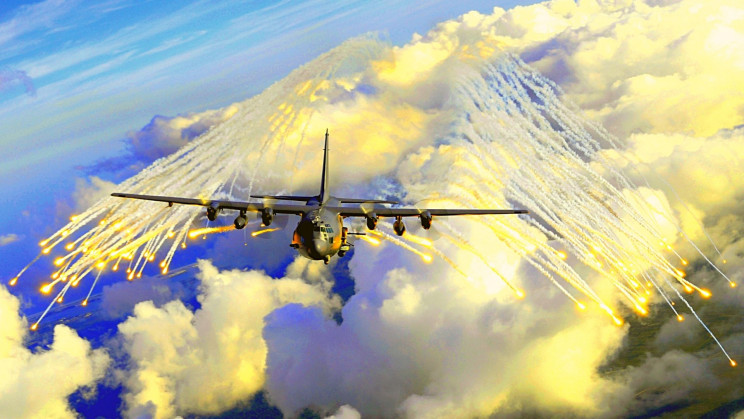The US Wants to Upgrade Its Biggest Planes With Cruise Missiles
The future of warfare builds on previous successes.
And throughout conflicts in Iraq, Syria, and Afghanistan, the U.S. military possessed an unrivaled advantage in air superiority. But all things change, and to face the possibility of conflict with new and advanced weapons and aircraft from Russia or China, the Special Operations Command (SOCOM) wants to upgrade some of its largest aircraft with cruise missiles, according to a recent solicitation shared on a government website.
Specifically, SOCOM's plans call for equipping AC-130s with cruise missiles, in addition to transforming the MC-130 into a "float plane", strengthening the architecture of U.S. military assets.
SOCOM wants a 'Stand-Off Precision Guided Weapon'
This is why SOCOM wants to upgrade both aircraft. Beyond contemporary geopolitics, this is significant because the AC-130 aircraft have provided critical backup to conventional and special operations troops who've seen deployments in major and minor conflicts since the Vietnam War. The latest version of the gunship, called the AC-130J Ghostrider, is a dangerous machine that carries 105 mm and 30 mm cannons, Griffin and Hellfire missiles, and even smart munitions, according to a report from Insider. The AC-130 is an optimal close-range air-support platform, since it can remain above targets for a long time, and continue to pummel targets with heavy firepower.
However, this capacity to stay in close proximity to a target over long periods is also one of the aircraft's most significant vulnerabilities, since it's comparably slow, and thus a relatively easy target for anti-aircraft fire. In the past, the AC-130 has flown operations almost exclusively in the darkness of night, to lower its risks. But now, SOCOM has ambitions for a "Stand-Off Precision Guided Weapon" that will enable the AC-130 to fire from uncommonly long distances, which will put targets in striking distance without endangering the aircraft itself. The solicitation documents SOCOM's desire for a cruise missile with a range of at least 230 miles and a maximum of 460 miles, carrying a warhead that weighs at least 13 lbs, 37 lbs at most.
Equipping AC-130s with cruise missiles could prove superfluous
Unlike the hypersonic missiles that major powers are developing like a second arms race, cruise missiles are a kind of munitions that move at subsonic speeds and fly at low altitudes, increasing the difficulty of detection for enemy forces. But SOCOM also wants the cruise missiles to possess electronic systems that will help them acquire and reacquire targets after being fired from the aircraft. But not everyone at Air Force Operations Command, a subunit of SOCOM, is optimistic about the order. "No matter the threat, air-to-air or air-to-ground, having a precision-guided cruise missile just enhances the performance and capability the AC-130 already has, but I don't believe that equipping a stand-off precision-guided cruise missile will make it any more relevant, due to capabilities and limitations of the aircraft," said former AC-130 Gunner B.A., in the Insider report.





Post a Comment